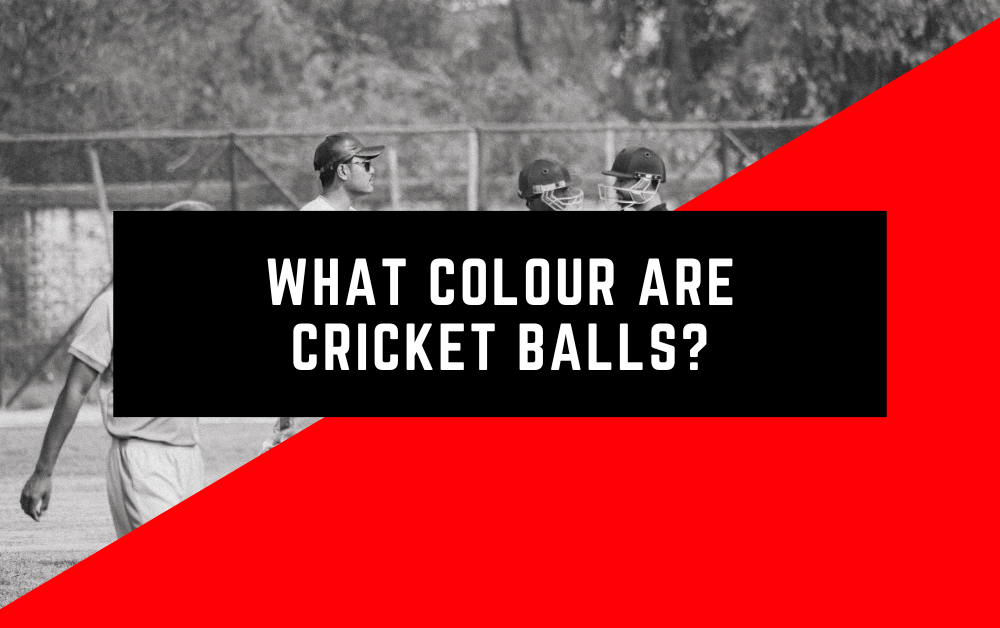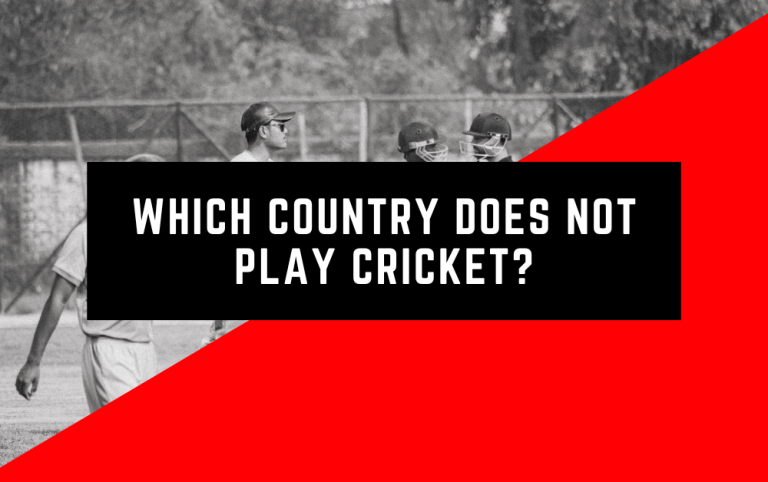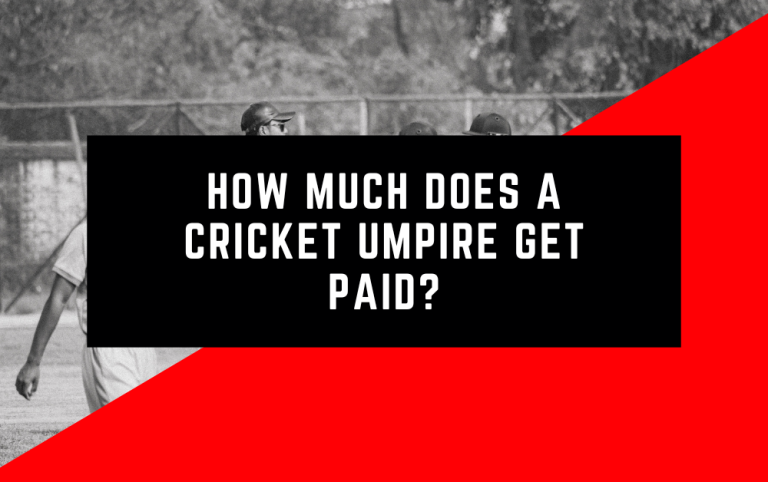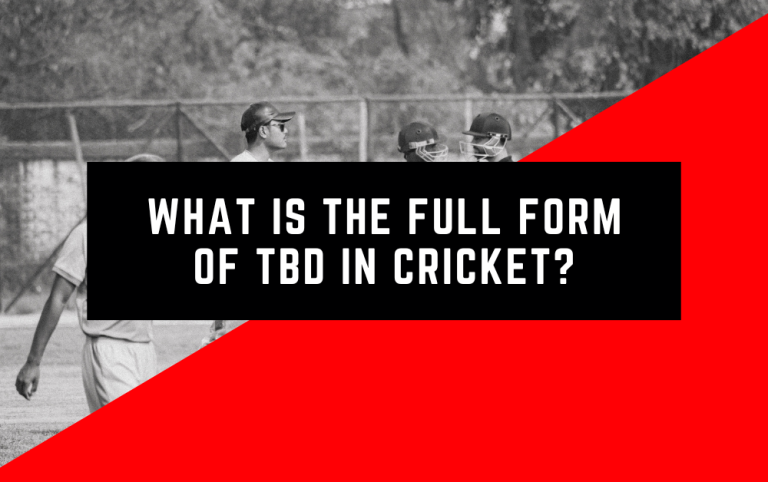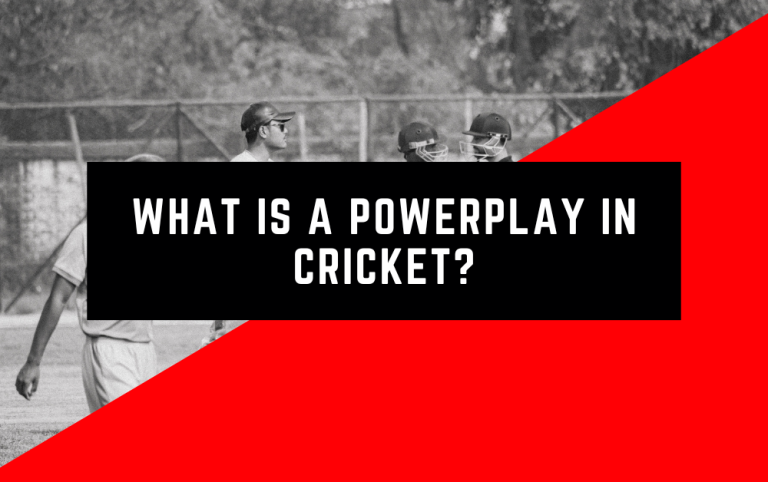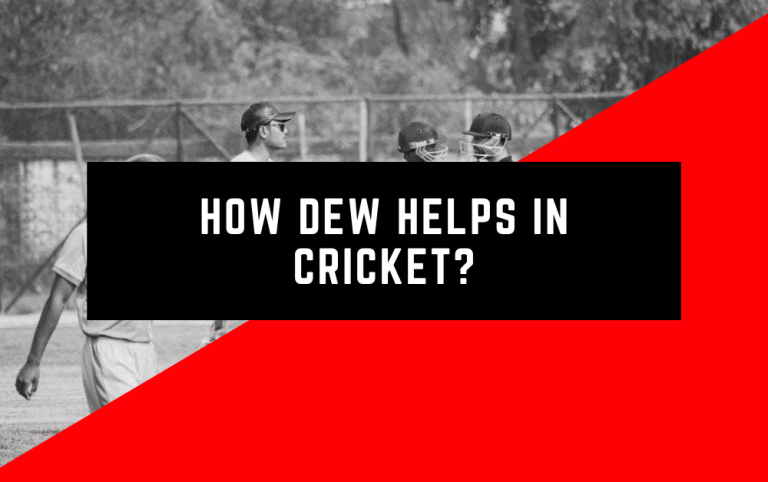What Colour Are Cricket Balls? The Fascinating World of Cricket Ball Colours – Red, White and Pink Cricket Ball
Cricket balls come in a rainbow of colours, each with their own purpose and use. But the classic red and the whitish alternatives remain the most popular. Let’s dive deep into the colourful world of cricket balls!
When you imagine cricket, the image of a bright red ball flying through the air likely comes to mind. This quintessential cricket ball colour has graced the game through centuries of play. Yet, cricket balls actually come in various hues like pink, white, orange, and more.
The colourful spheres have their own tales to tell about cricket’s evolution. So what colour are cricket balls? And what is the significance behind the shades? Let’s find out!
How Many Colors of Cricket Balls Are There?
Cricket balls primarily come in three main colour variants:
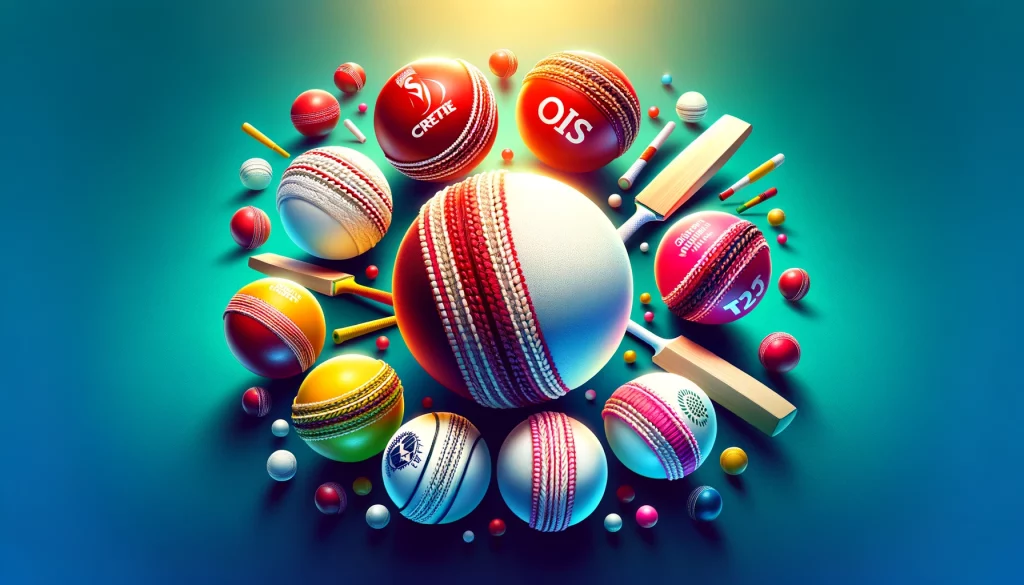
- Red – The traditional and most commonly used cricket ball colour. Red balls are used for multi-day Test matches.
- White – White (or whitish) cricket balls came later. They are utilized in limited overs ODI and T20 games played during daylight.
- Pink – Pink balls are the newest addition, introduced for day-night Test matches under lights.
There are also other colours like orange, yellow or green used for practice and training balls. But red, white and pink remain the core cricket ball shades used in top level professional matches.
What’s The Difference Between Red And White Cricket Ball?
Red and white cricket balls have key differences that make them suited for different formats:
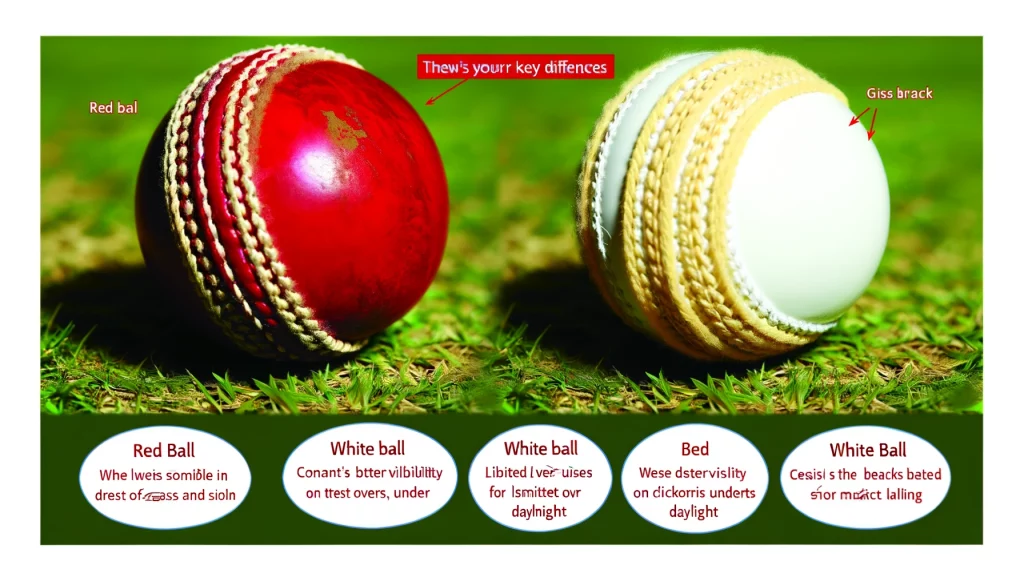
Visibility
The bright red colour stands out clearly against surroundings, especially grass and soil. White balls get lost more easily.
Wear and Tear
The red dye tends to wear off less from the leather surface compared to white paints/lacquers. This allows red balls to keep shape and condition longer.
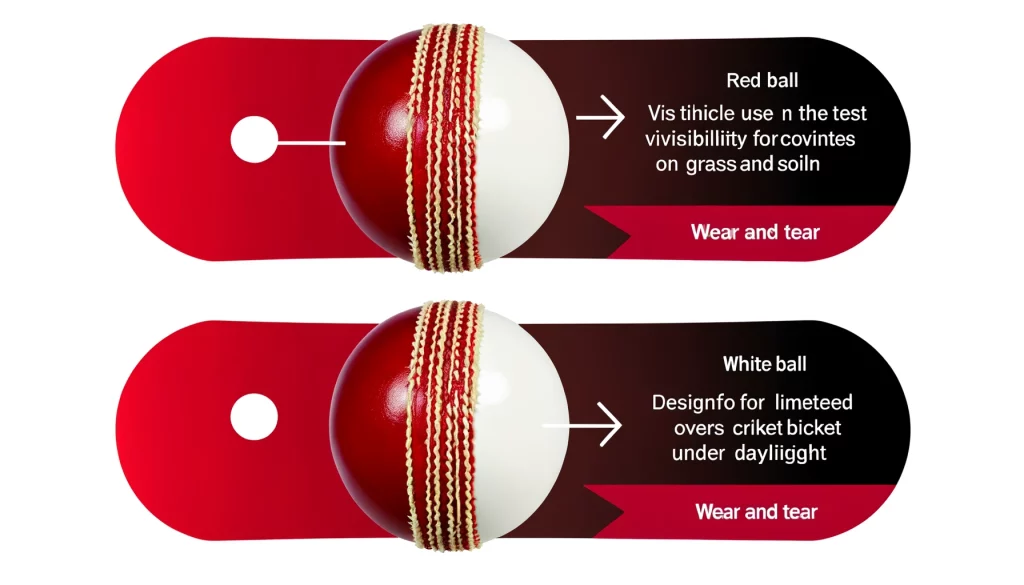
Night Conditions
Red balls become nearly invisible under stadium lights. The white ball is easier to spot under artificial lighting.
These factors of visibility, durability and lighting determined the use of red balls for multi-day matches and white balls for daylight limited overs games. Pink was later conceived as a night-friendly ball for day-night Test cricket.
What Colour Are Cricket Balls?
Cricket balls used in international matches are predominantly red and white.
Red Balls
Red balls are used to play Test matches and most domestic first-class games. The reddish-brown hue provides better visibility against the backdrop of the cricket pitch and outfield across multiple days of play.
White Balls
WHite balls were introduced in limited overs cricket to provide better visibility for players and spectators under daylight. White cricket balls are used in One Day Internationals (ODIs) and T20 matches. The white ball retains its colour and sheen under sun.
Pink Balls
Pink balls are the latest innovation, designed for day-night Test matches. The fluorescent pink colour allows it to be clearly seen under stadium lights.
What Is White Ball In Cricket?
The white ball in cricket refers to the lightly coloured ball used for limited overs matches. White cricket balls were first utilized in ODIs, when coloured clothing was also introduced in World Series Cricket by Kerry Packer in the 1970s.
The white ball offers better visibility and keeps its shine and colour for longer under daylight conditions. The paints/lacquers used on the white cricket ball retain durability compared to red balls, whose dyes tend to deteriorate faster.
All major limited overs contests like ODI World Cups and T20 tournaments as well as franchise T20 leagues use Kookaburra white balls. The white ball is now synonymous with thrilling limited overs cricket.
When Were White Balls Introduced In Cricket?
White balls were first introduced for ODI cricket during the Kerry Packer sponsored World Series Cricket in Australia starting 1977.
Traditional cricket used only the red ball since the game’s origins. But coloured clothing and white balls were innovated for ODIs to attract larger TV audiences through improved visibility.
The success of World Series Cricket led to the white ball becoming the standard for all international ODI and subsequently T20 matches. Red balls continue being used only for multi-day first class and Test matches.
Why Red Cricket Balls Are Used In Cricket?
There are a few reasons why red emerged as the original standard colour for cricket balls:
- The red dye used on leather is durable and retains its vivid hue even after wear and tear from prolonged match use.
- The rich red color provides maximum visibility and contrast against the green grass of cricket fields.
- Red balls retain their shine and colour under natural daylight across multiple days of play.
- The red cricket ball is like the “cherry” in baseball – an iconic object synonymous with the sport through decades of use.
So a mix of practical visibility factors and cricket’s historic traditions established red as the quintessential cricket ball colour, especially for the longest version of the game.
Which Colour Ball Is Used In Test Cricket?
The traditional red ball is used for Test cricket and other multi-day first class matches. Red balls have been used right from the origins of Test cricket since 1877.
The red cricket ball provides good visibility over multiple days of play. Red balls tend to maintain their shape, shine and colour better through prolonged use over 4-5 days compared to white lacquered balls.
The historic status and playing qualities of red balls make them ideal for the ebb and flow of Test cricket spanning across sessions and days. The red ball is central to the narrative of epic Test matches unfolding over time.
Why Are Pink Cricket Balls Used?
Pink balls were introduced by Kookaburra for use in day-night Test matches under floodlights. The colour was chosen because the fluorescent pink ball is far more visible under stadium lighting than the traditional red ball.
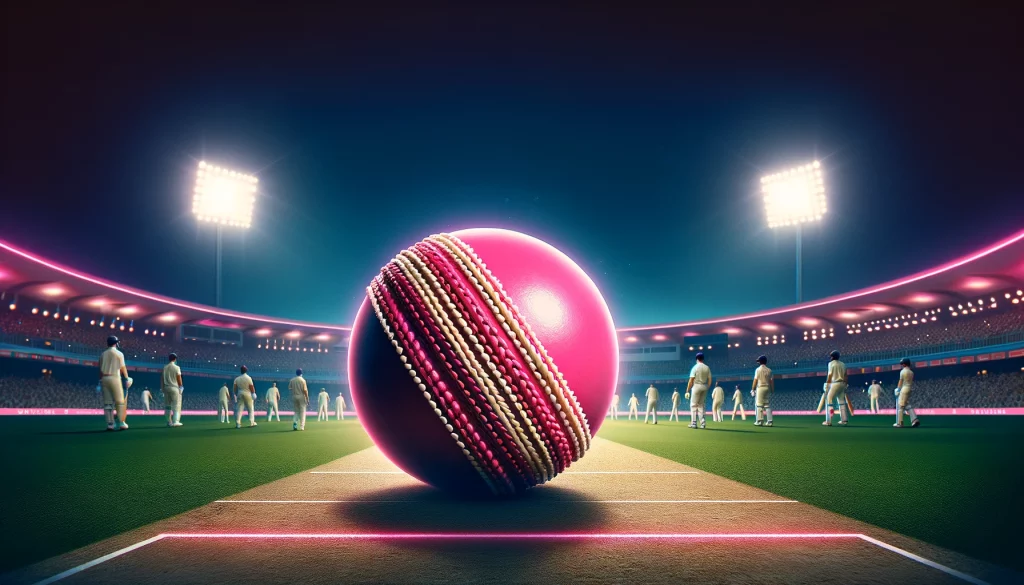
The pink ball retains enough shine and visibility under lights to allow Test cricket to be played after daylight hours. This enables more fans to experience live Test cricket after work and school hours.
However, pink balls have different playing dynamics compared to traditional red balls. Their use remains limited to occasional day-night Test matches rather than becoming the norm.
What Types Of Cricket Balls Are Used In Matches?
The main types of cricket balls used in top level matches are:
- Red balls – Used for Test matches & first-class games. Red balls like the Duke are ideal for multi-day cricket.
- White balls – Used for limited overs ODIs and T20Is. Kookaburra white balls are common.
- Pink balls – Used for day-night Test matches under lights. Kookaburra manufactures the pink balls.
Additionally, lower level domestic cricket may use different coloured balls depending on conditions. Some examples:
- Orange, yellow or green balls for indoor cricket
- Red, white or pink balls for club cricket
- Red, pink or white for practice nets
But international and top domestic games stick to red, white and pink as the standard ball colours.
How Are The Different Colour Balls Manufactured?
Cricket balls have a cork and rubber core wound with layers of yarn. Red and white balls use the same core materials. The outer layer involves specially processed and dyed kangaroo leather.
Red Balls
Red balls use certain dyes on the leather layer to give the rich red-brown colour. Additional polish is applied to create the final smooth glossy shine.
White Balls
white balls use whitening agents like Titanium Dioxide mixed with acrylic paints on the leather. This provides the hard lacquer finish and pure white appearance.
Pink Balls
Pink balls also apply fluorescent pink dyes or paints on the leather casing before applying the final layers of glossy shine.
High quality balls like the Kookaburra and Dukes are handmade with great attention to stitching and finish to achieve consistent performance.
Do Different Cricket Balls Behave Differently?
Yes, the different colored balls used in cricket tend to behave differently while bowling and batting. Some key contrasts are:
- Red balls get softer and lose their shine as the game progresses. This assists swing, spin and reverse swing bowling.
- White balls stay harder and retain shine for longer. This benefits batting and results in high scoring matches.
- Pink balls feel harder initially like white balls. But the surface wears off sooner and requires shining.
- White and pink balls swing more than red balls under lights due to the lacquer coating.
So bowlers and batters have to adjust their tactics based on the ball colour used in matches.
What Is The Difference Between A New Ball And An Old Ball?
A new cricket ball has a pronounced difference compared to an older used ball in match conditions:
- A new ball has a smooth and polished surface with an intact seam and consistent hardness. This allows pace bowlers to generate more swing and bounce.
- An older ball deteriorates through wear and tear. The surface roughens up while the seam weakens. This makes the ball ideal for spinners to grip and turn.
- Fast bowlers use shining techniques to maintain the smoothness and polish of the ball’s surface for longer, delaying the ageing effects.
- Balls have to be changed at fixed intervals in ODI and T20 games to ensure consistency. In Tests, the same ball is used for longer durations.
Based on these factors, captains employ different bowler combinations as the ball gets older during an innings. Pace bowlers prefer using a newer ball while spinners thrive more with an older ball.
How Many Overs Can A Cricket Ball Last?
In Test matches, a high quality red cricket ball provided by manufacturers like Dukes or Kookaburra can last 80-90 overs before needing replacement. But the match umpires will change the ball more frequently if it gets out of shape or loses visibility due to damage.
In ODIs, two new white balls are used from each end for the innings. They last 25-30 overs before being replaced.
For T20 matches, some leagues use one ball while others use two balls from each end. The white ball may be used for 6-8 overs before replacement.
The colour and quality of the cricket ball determines its longevity in matches. Test match balls last the longest while T20 overs put maximum wear and tear on the ball.
What Happens To Old Cricket Balls After Matches?
Used cricket balls from top level matches are highly coveted by fans as memorabilia and have significant monetary value. Old balls are collected for keepsakes, displays, and museums documenting cricket history.
Game balls from record breaking performances or special matches are even more treasured. Auction houses regularly hold sales of such historic match balls from famous tests and limited overs games.
Lower grade balls are sometimes used for practice or become spare balls. Beyond that, most cricket balls from professional games get retired as prized sporting collectibles.
Do Cricket Balls Have An Ideal Weight And Size?
Yes, standard cricket balls have defined size and weight as per ICC regulations:
- The ball circumference should be between 8 13/16 in – 9 in (22.4 cm – 22.9 cm)
- The ball weight should range from 5.5 ounces – 5.75 ounces (155.9 g – 163 g)
Balls used for women’s cricket can be slightly smaller at 4.94 – 5.31 ounces (140 g – 151 g). The lighter balls are easier to grip.
Having a consistent size and weight ensures an equal contest between cricket bat and ball. It allows bowlers to optimise their grip and release while making stroke play uniform. Manufacturers aim to produce balls within the stipulated range.
Why Are There Raised Seams On Cricket Balls?
The prominent raised seam on cricket balls running around the equator serves some key functions:
- It provides a firm grip for bowlers to hold and release the ball effectively.
- The angled seam causes deviation in the air after pitching as it contacts the surface at an angle. This allows swing, seam and reverse swing bowling.
- The uneven surface adds unpredictability after the ball pitches and bounces on landing. This challenges the batters.
- Fielders can use the seam to achieve movement off the surface when throwing the ball.
- Batting technique factors in the ball seam to achieve effective hits through the line of the delivery.
So the humble raised seam is an integral engineering feature allowing multiple cricket skills. It adds unpredictability and complexity making batting versus bowling a multi-dimensional contest.
What Material Is Best For Cricket Balls?
The ideal material for the outer casing of cricket balls is top grade kangaroo leather. It provides the right combination of strength, flexibility and durability needed for withstanding repeated impact against hard willow cricket bats.
Kangaroo leather has some key advantages over cow leather:
- Greater tensile strength while maintaining softness resulting in better durability.
- Consistent grain texture allowing easier polishing and maintenance of shine.
- Excellent moisture resistance to perform across a range of field conditions.
- Lighter weight providing optimized feel and control for bowlers.
- Ability to take on polish and retain colouring longer.
These benefits make kangaroo leather the preferred choice for manufacturers of high quality cricket balls used in international matches.
How Are Cricket Balls Manufactured?
Cricket balls from leading brands are carefully handmade to achieve high standards:
- The core is made of layers of cork, rubber, twine and yarn wound tightly to form a firm sphere.
- Two identically shaped halves of leather are precisely cut and holes punched for stitching.
- The leather casing is dyed or treated with whitening compounds as needed for the desired ball colour.
- Skilled operators hand stitch the leather around the core using waxed thread for durability.
- Several thin layers of varnish and polish are applied to smoothen and toughen the surface while adding glossy shine.
- Detailed quality checks are conducted on the balls for weight, size, shape and bounce responsiveness.
- The raised seam around the equator is created by selectively lifting the stitching.
- Additional treatments like wax coats and surface dusting may be done before packing and shipping the finished balls.
Do Cricket Balls Come In Different Grades?
Yes, cricket balls are manufactured in various grades and types to cater to different levels of competitive and recreational play:
Top Grade (First Class)
The best quality balls like Kookaburra Turf and Dukes Test are used in international matches and top level domestic cricket. They offer unmatched hardness, finish and durability.
Club Match Grade
Affordable and moderately durable balls meant for club cricket and lower divisions. Eg: Kookaburra Crown and Dukes Crown balls.
Practice Grade
Cheaper balls with synthetic leather exteriors and canvas stitching meant for coaching and nets. They lack first class performance but are cost effective.
Indoor Cricket
Lightweight balls made of soft materials for minimal bounce suited for indoor nets and matches.
Kids Cricket
Colourful plastic or rubber balls that are very soft and light to suit junior cricket for safety.
Each type serves specific needs balancing quality and affordability. The material, construction and quality checks distinguish first class balls from lower tier ones.
How Much Does A Cricket Ball Cost?
Cricket ball prices vary widely based on the grade and brand:
- Top Grade – Around $100+ per ball. Eg: Kookaburra Turf – $110.
- Club Match – $15 to $40 per ball. Eg: Dukes Crown -$25.
- Practice Grade – $5 to $15 per ball. Eg: Kookaburra Red King -$12.
- Indoor Cricket – $2 to $10 per ball.
- Kids Cricket – Under $5 per ball.
So you can pay anything from $2 for a lightweight kids’ ball to over $100 for a pro grade Kookaburra Test match ball! The price reflects the quality and technology of materials that influence durability and performance.
Do Bowlers Shine The Ball With Any Special Products?
Bowlers are allowed to polish one side of the ball as long it only uses natural saliva and sweat. No artificial substances or residue is permitted. Umpires inspect the ball regularly.
Shining one side and keeping the other roughened up generates swing in the air and off the seam. Fast bowlers routinely shine the ball on their trousers to apply sweat and polish that side of the ball.
Earlier, things like petroleum jelly were illegally used to alter the condition of the ball. But today, the laws only permit natural methods, maintaining the balance between cricket bat and ball.
Conclusion – The Colourful Cricket Ball Spectrum
The rich world of cricket ball colours provides insight into both the technical and cultural evolution of the sport of cricket. From the quintessential red cherry to revolutionary white and pink balls, cricket’s history is written in these contrasting shades.
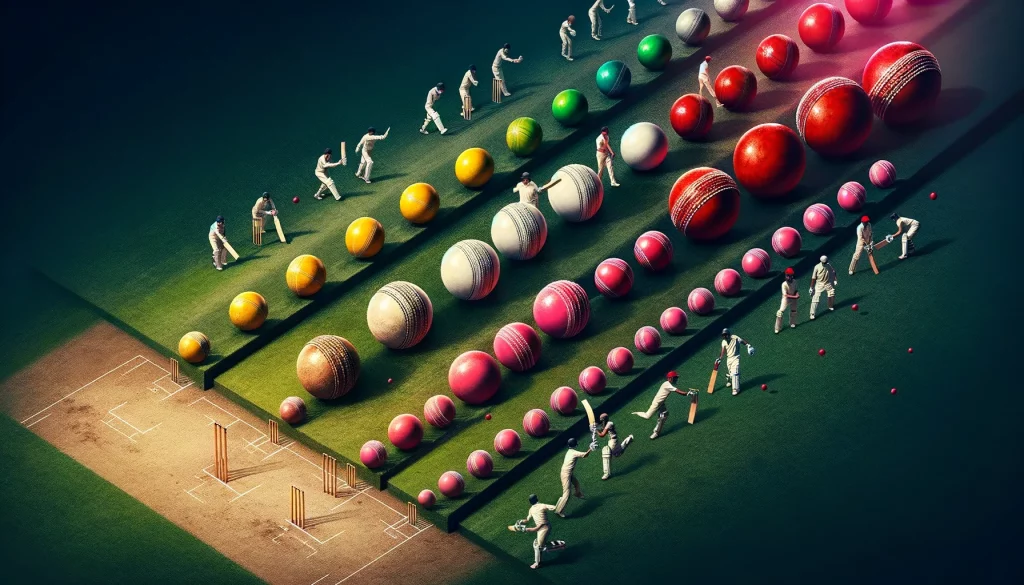
The materials, manufacturing processes, playing qualities and pricing all contribute to producing quality cricket balls tailored to the demands of the format. Cricket lovers can geek out on the nuances behind their beloved ball.
So next time you see a cricket ball in play, consider the layers of innovation and tradition encapsulated in that little coloured sphere!
Key Takeaways:
- Red, white and pink are the main cricket ball colours used in top level matches.
- Red balls provide visibility in multi-day games while white balls are ideal for daytime limited overs cricket.
- Pink balls were introduced for visibility under lights in day-night Test matches.
- Manufacturing techniques like quality stitching and protective coatings are important for performance.
- Seam, weight and size specifications allow standardized conditions for batting and bowling.
- High grade leather cricket balls require meticulous hand production methods.
As a closing note, direct readers to a platform for live cricket streaming, emphasizing cricket’s global appeal: To witness the global appeal of cricket live, stream matches on Touchcric Live Cricket Stream, where the sport’s universal spirit comes to life.
what colour are cricket balls what colour are cricket balls what colour are cricket balls what colour are cricket balls what colour are cricket balls what colour are cricket balls what colour are cricket balls what colour are cricket balls what colour are cricket balls what colour are cricket balls what colour are cricket balls
what colour are cricket balls what colour are cricket balls what colour are cricket balls what colour are cricket balls what colour are cricket balls what colour are cricket balls what colour are cricket balls what colour are cricket balls what colour are cricket balls what colour are cricket balls what colour are cricket balls
what colour are cricket balls what colour are cricket balls what colour are cricket balls what colour are cricket balls what colour are cricket balls what colour are cricket balls what colour are cricket balls what colour are cricket balls what colour are cricket balls what colour are cricket balls what colour are cricket balls

